17 June 1778 Wednesday
. . . . . .
1789
Descrizione dei circhi, particolarmente di quello di Caracalla e dei giochi in esso celebrati
Description of circuses, particularly that of Caracalla and the divine games celebrated in it
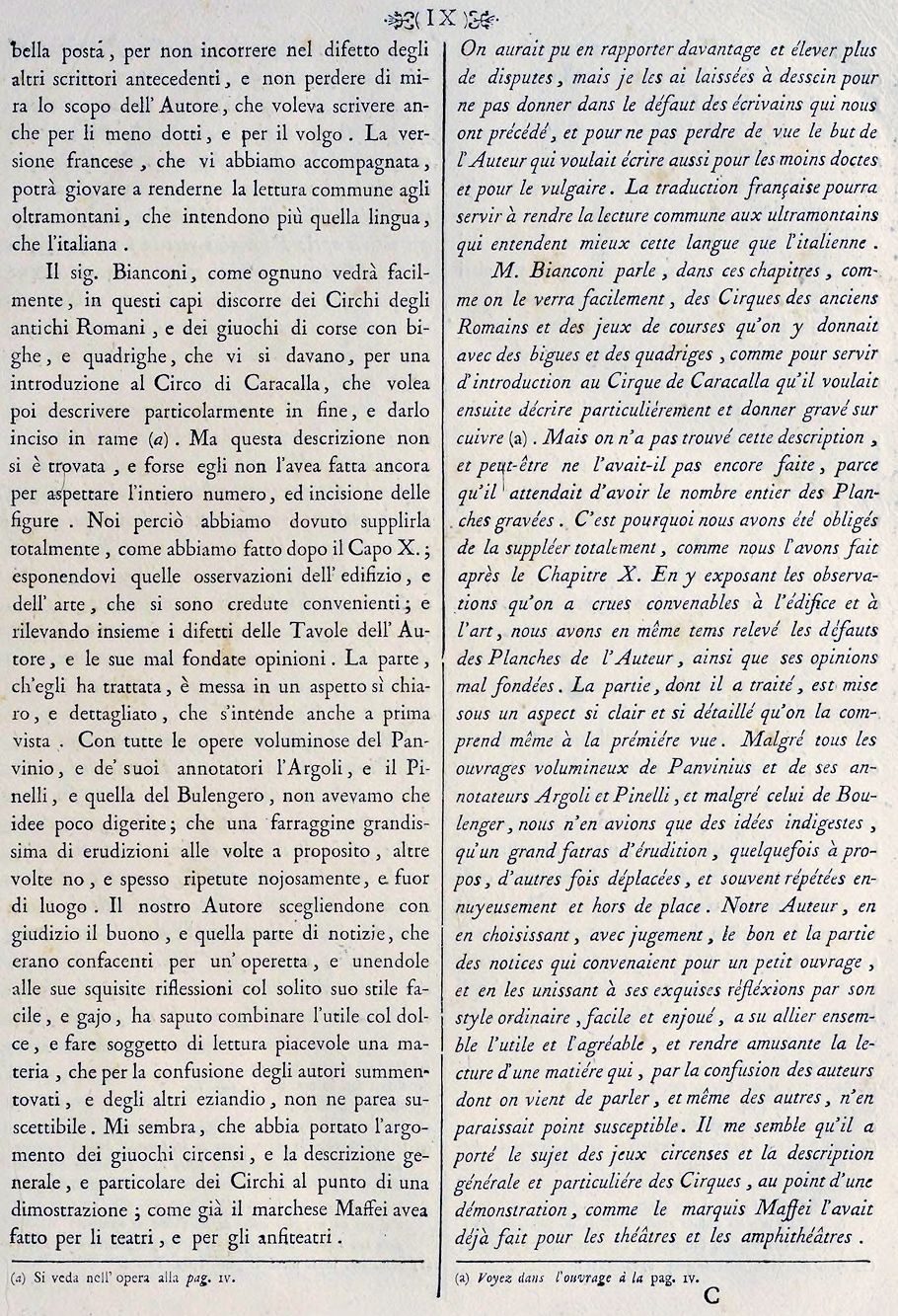
More could be adduced, and greater questions could be raised, which I have deliberately left, so as not to run into the fault of the other antecedent writers, and not to lose sight of the aim of the Author, who wanted to write also for the less learned , and for the common people. The French version, which we have accompanied you, could help to make it common to the people from beyond the mountains, who understand that language more than Italian.
Mr. Bianconi, as everyone will easily see, in these chapters talks about the Circuses of the ancient Romans, and the racing games with chariots and quadrigas, which were given there, for an introduction to the Circus of Caracalla, which he then wanted to describe particularly in the end, and give it engraved in copper (a). But this description has not been found, and perhaps he had not yet made it to wait for the entire number and engraving of the figures. We therefore had to make up for it totally, as we did after Chapter X; expounding there those observations of the building and of the art, which have been deemed appropriate; and at the same time pointing out the defects of the Author's Tables, and his ill-founded opinions. The part which he has treated is put in such a clear and detailed aspect that it is understood even at first sight. With all the voluminous works of Panvinio, and of his annotators Argoli, and Pinelli, and that of Bulengero, we had nothing but poorly digested ideas; what a huge hodgepodge of eruditions sometimes appropriate, sometimes not, and often repeated boringly, and out of place. Our Author judiciously choosing the good, and that part of the news, which were suitable for an operetta, and combining them with his exquisite reflections with his usual easy and gay style, knew how to combine the useful with the sweet, and make the subject a material which, due to the confusion of the authors mentioned above, and of the others, does not seem susceptible to it is a pleasant reading. It seems to me that he has brought the subject of circus games, and the general and particular description of circuses to the point of a demonstration; as the Marquis Maffei had already done for theaters and amphitheaters.
32 y.o. Francesco Piranesi 1 August 1790
Raccolta de'Tempj antichi, Vol. II.
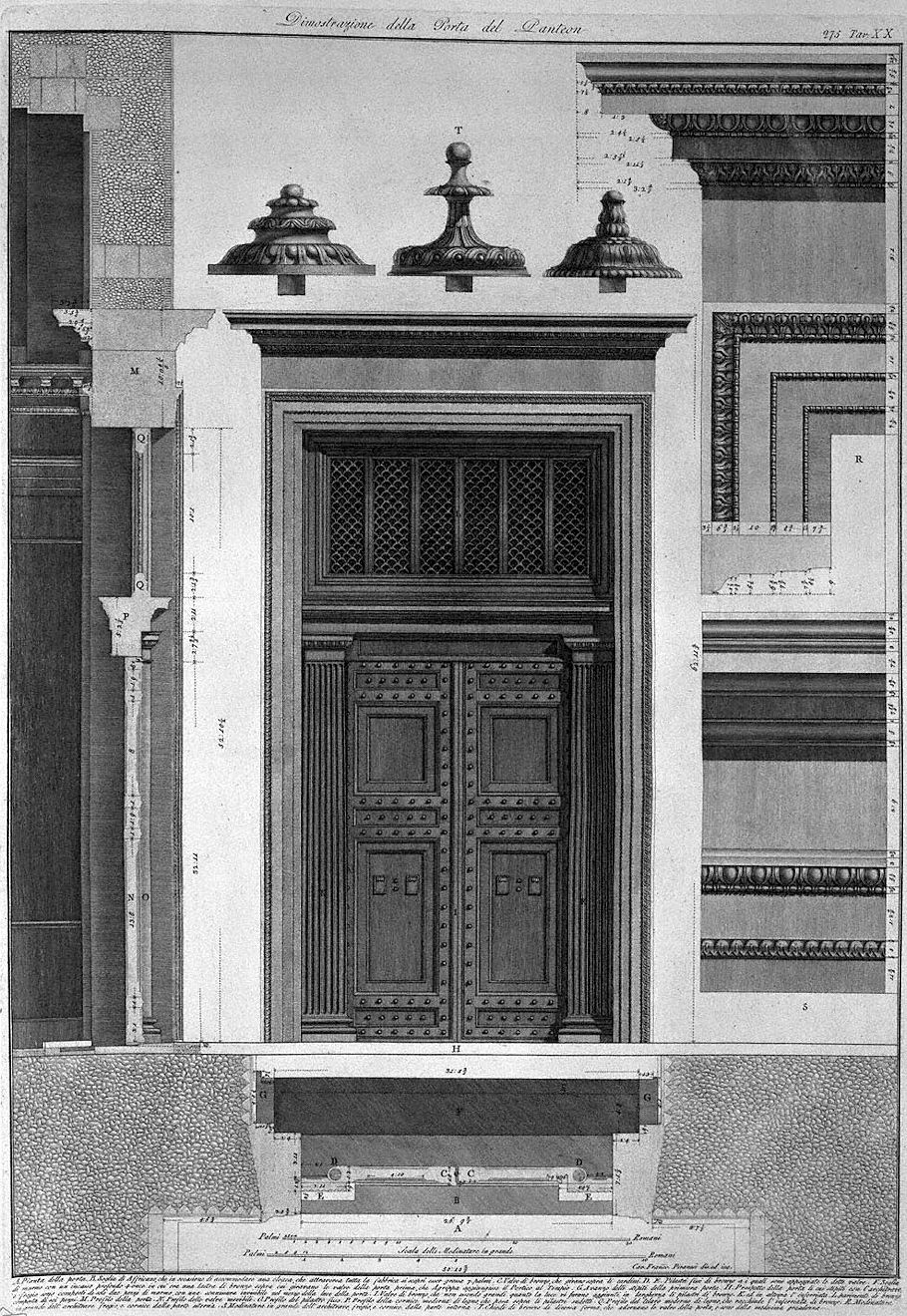
Demonstration of the Pantheon Door
A. Plan of the door. B. Threshold of Affricano, who, on the occasion of repairing a cloaca, which runs through the whole building, was found to be 7 palms thick. C. Bronze valves, which turn on the hinges. D. E. Fixed bronze pillars on which the said valves are placed. F. Threshold of marble with a 4. ounce deep recess in which was a bronze plate upon which the door valves revolved before Agrippa added the Portico to the Temple. G. Leftover of the jambs of the first door. H. Front view of the door whose jambs with architrave and frieze are composed of only two pieces of marble, with an invisible joint in the middle of the door opening. I. Valve of bronze, which, not being as large as the light, were added in width to the bronze pillars. K. and the railing in height. L. also of bronze composed of six pieces. M. Profile called door. N. Profile of the movable shells. O. Profile of the fixed pillar. P. Profile of the modern wooden frame which rests on the aforementioned pillars. Q. Profile of the modern wooden frame which encloses the bronze grille. R. Enlargement of the frieze architrave, and cornice from the outside. S. Enlargement of the architrave, frieze and cornuce on the inside. T. Bronze nails of different shapes, which adorn the valves of the door, and are of the same size.
Cav. Francesco Piranesi drawn and engraved
17 June 1812 Wednesday
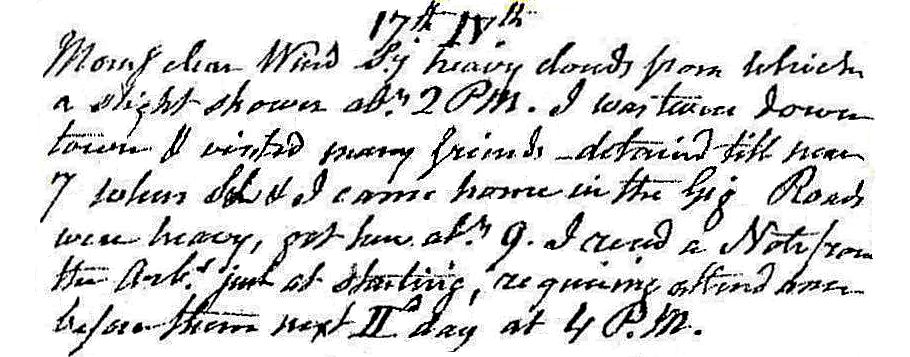
Morning clear, wind Serly. Heavy clouds from which a slight shower about 2 PM. I was twice downtown and visited many friends--detained till near 7 when SL and I came home in the gig. Roads very heavy, got home about 9. I read a note from the Arbitrator just at starting, requiring attendance before them next Monday at 4 PM.
17 June 2008
Futuristic Tradition
"Haven't you heard, Zeitgeist is so yesterday!"
--über uvred e suicidal
17 June 2022
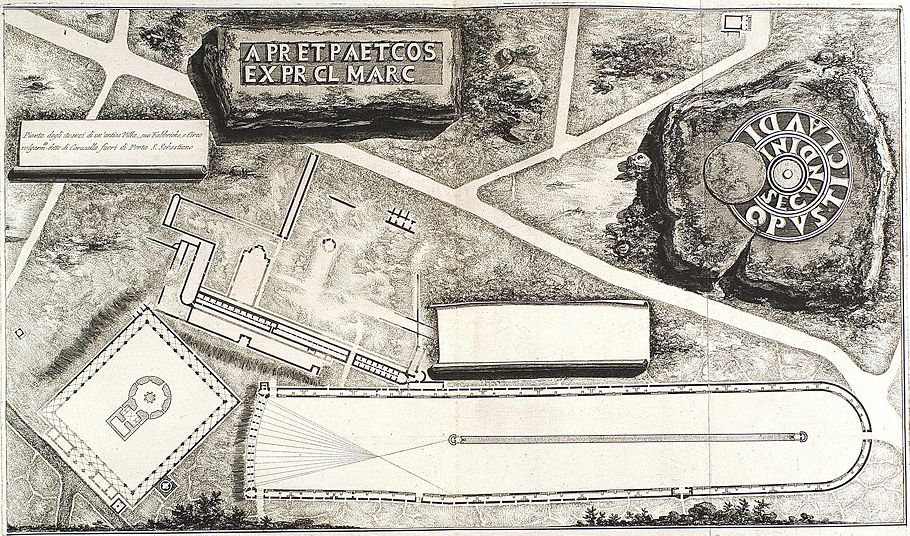
Giovanni Battista Piranesi (attributed), 'Pianta degli avanzi di un 'antica Villa, sue Fabbriche, e Circo volgarmente detto di Caracalla fuori di porta S. Sebastiano' first state, circa 1775-78 in Le Antichità Romane vol. 1 (Universitätsbibliothek Heidelberg), 1787.
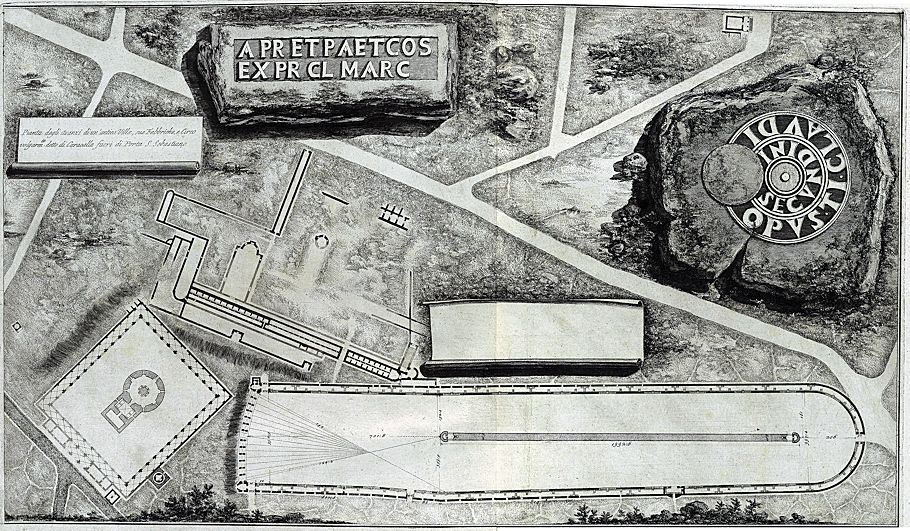
Giovanni Battista Piranesi (attributed), 'Pianta degli avanzi di un 'antica Villa, sue Fabbriche, e Circo volgarmente detto di Caracalla fuori di porta S. Sebastiano' second state, dimensions added, 1778 in Le Antichità Romane vol. 1 (Getty Research Institute), 1787.
|
The first questions raised by the two near identical circus site plans are, "Who drew them and why did Francesco append them to Le Antichità Romane vol. 1?" It seems doubtful that Francesco would add any plate to Le Antichità Romane that was not the product of his father or himself, and, if Francesco were the person responsible for the site plans, he would have signed them as such. Thus, given Piranesi's expressed curiosity and interest in the depicted circus, it is then perfectly reasonable to attribute the site plans to Piranesi himself. And, with the attribution of Piranesi as the person responsible for this pair of site plans, the incompleteness and obscurity of the overall composition of the etching becomes much less inscrutable.
The undeniably intentional asymmetry of the Circus of Caracalla [sic] plan undoubtedly surprised Piranesi the most. Prior to this plan every other Piranesi-drawn ancient circus plan is strictly symmetrical for the whole length of the circus--see the Circus Maximus within the 'Pianta dell antico Foro Romano' first state in Le Antichità Romane Vol. 1 (1756) and the Circus Agonalis sive Alexandri, Circus Apollinaris, Circus Caii et Neronis, Circus Domitiae, Circus Flaminius jam tum Apollinaris, and Circus Hadriani within the 'Ichnographia Campus Martius' first state in Il Campo Marzio dell'Antica Roma (1762). Although it is difficult to assert with any certainty, Piranesi nevertheless may well be the first person in modern times to discovery that "the carceres, or starting gates, had a distinctive, slanted, slightly curved, plan form, designed to compensate for what would otherwise be significant differences in the distances from the individual starting gates to the start of the first section of straight track on the right hand side of the spina (as seen from the carceres)." In any case, the asymmetrical form-follows-function design of the Circus of Caracalla was certainly new to Piranesi, as he meticulously delineated the geometry of the race-starting-formula within the Circus of Caracalla plan, and, subsequently, decided to redraw and correctly redesign all the circuses he had already drawn within the 'Pianta dell antico Foro Romano' and the 'Ichnographia Campus Martius.' The new intelligence Piranesi gathered at the Circus of Caracalla ultimately became the catalyst for the Ancient Circuses publishing project, and the 'Pianta degli avanzi di un 'antica Villa, sue Fabbriche, e Circo volgarmente detto di Caracalla fuori di porta S. Sebastiano' itself is the summation of all the extensive field survey work Piranesi carried out himself at the site--a rare type of etching within Piranesi's oeuvre for sure.
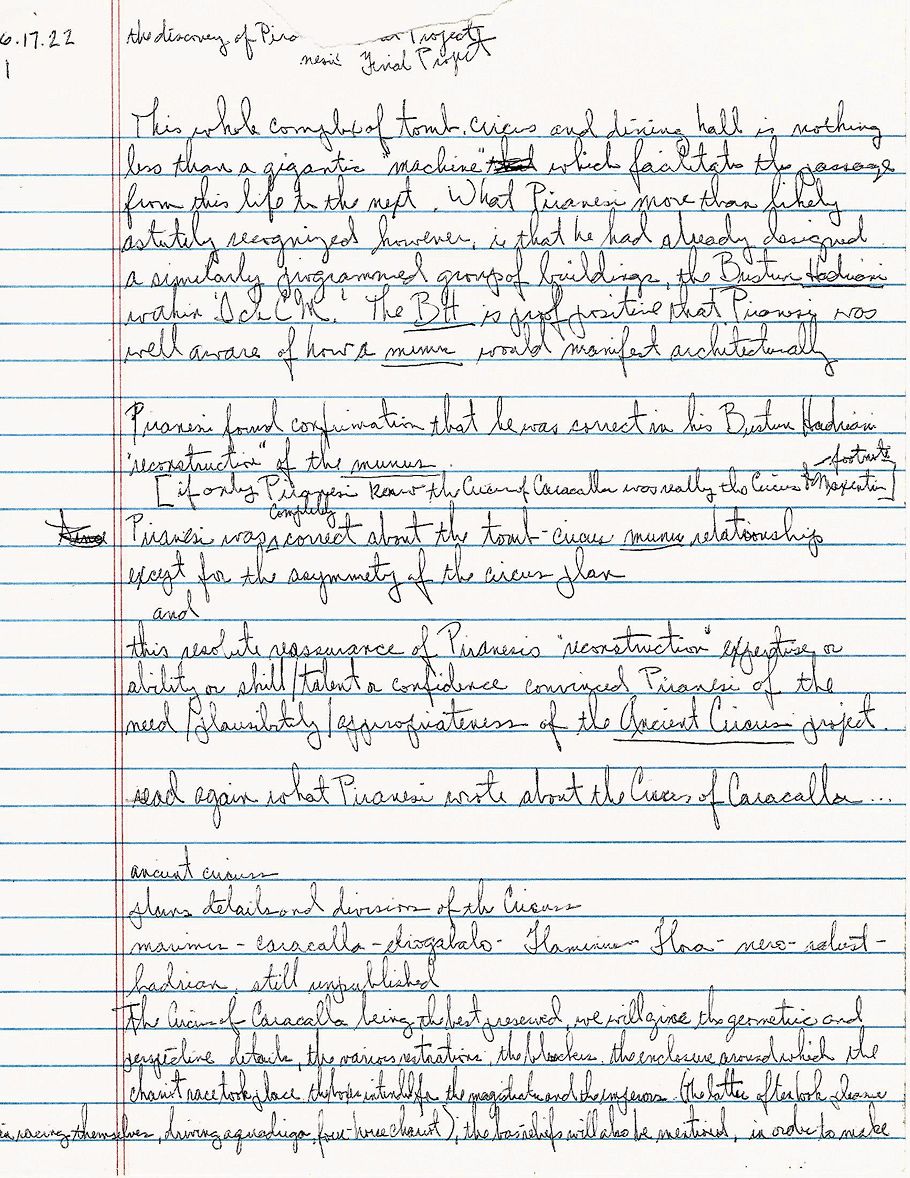
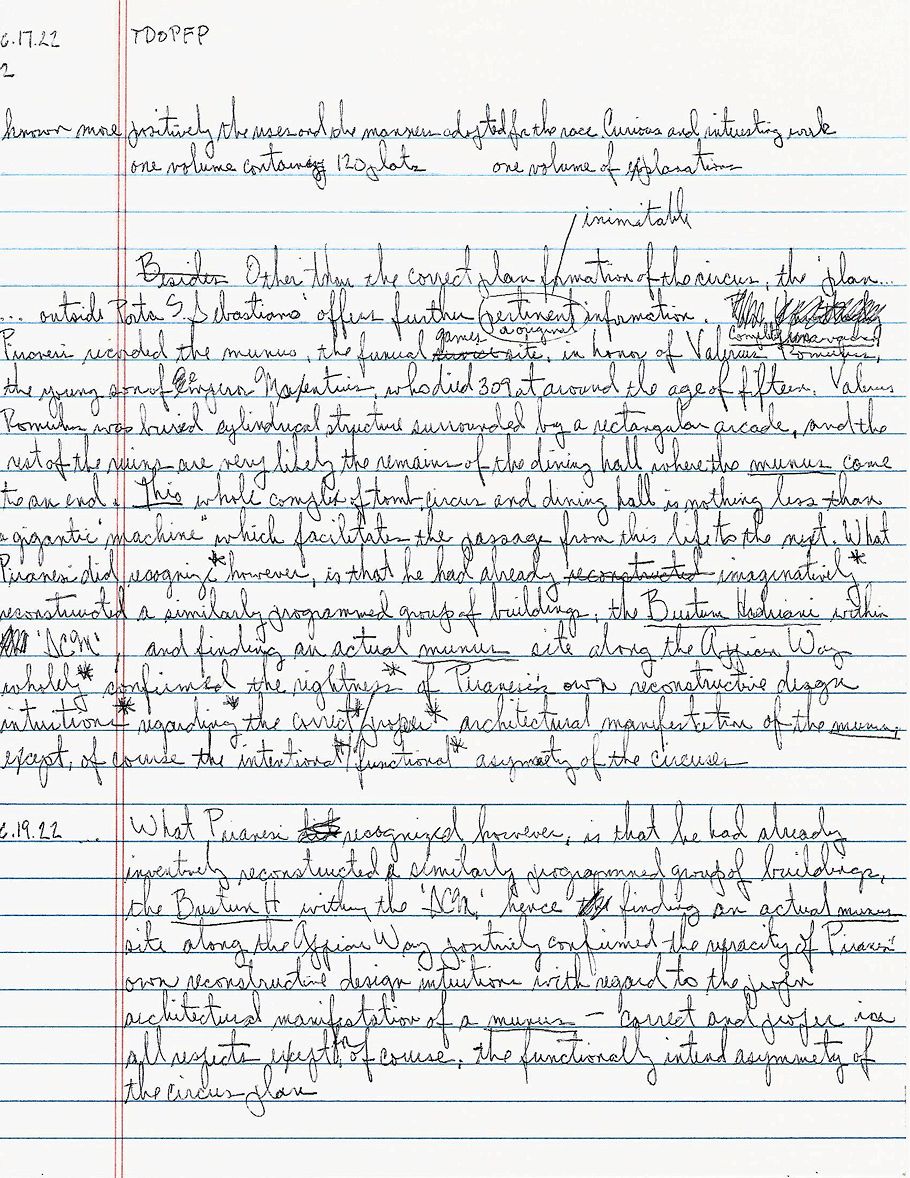
17 June 2023 Saturday
It won't surprise me if Francesco had something to do with Bianconi not publishing Descrizione dei circhi, particolarmente di quello di Caracalla e dei giochi in esso celebrati while he was alive.
|